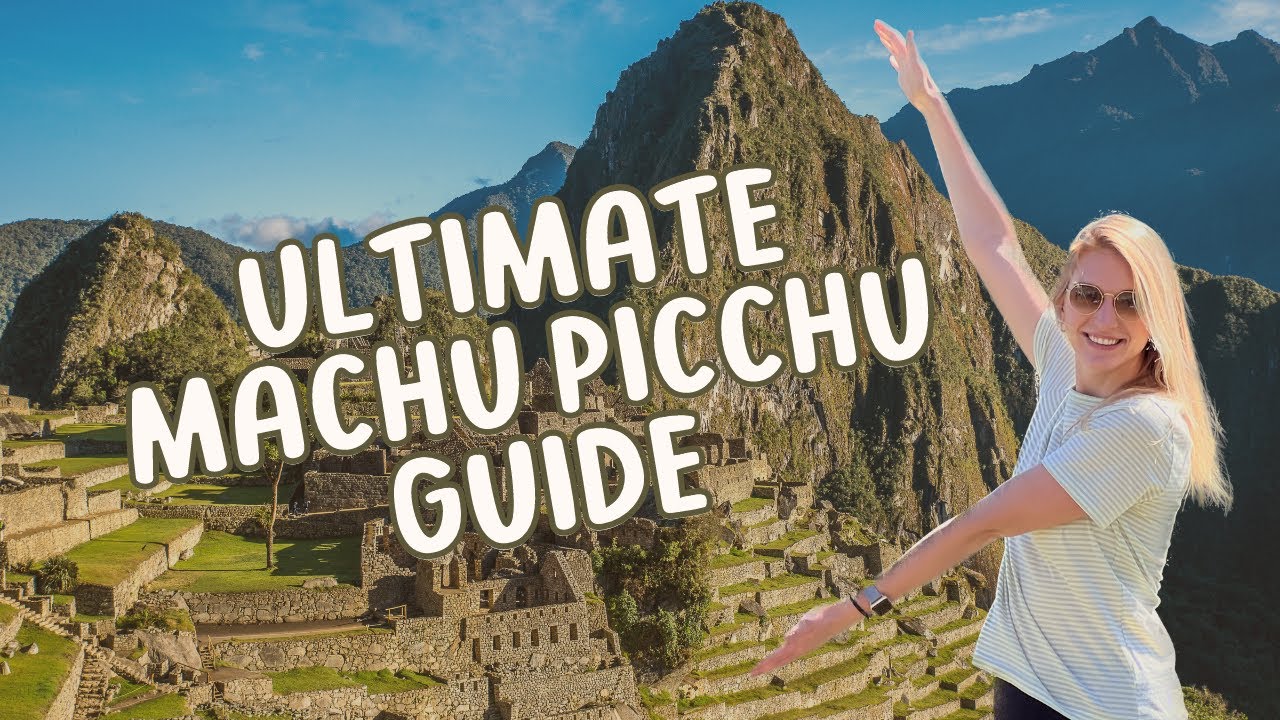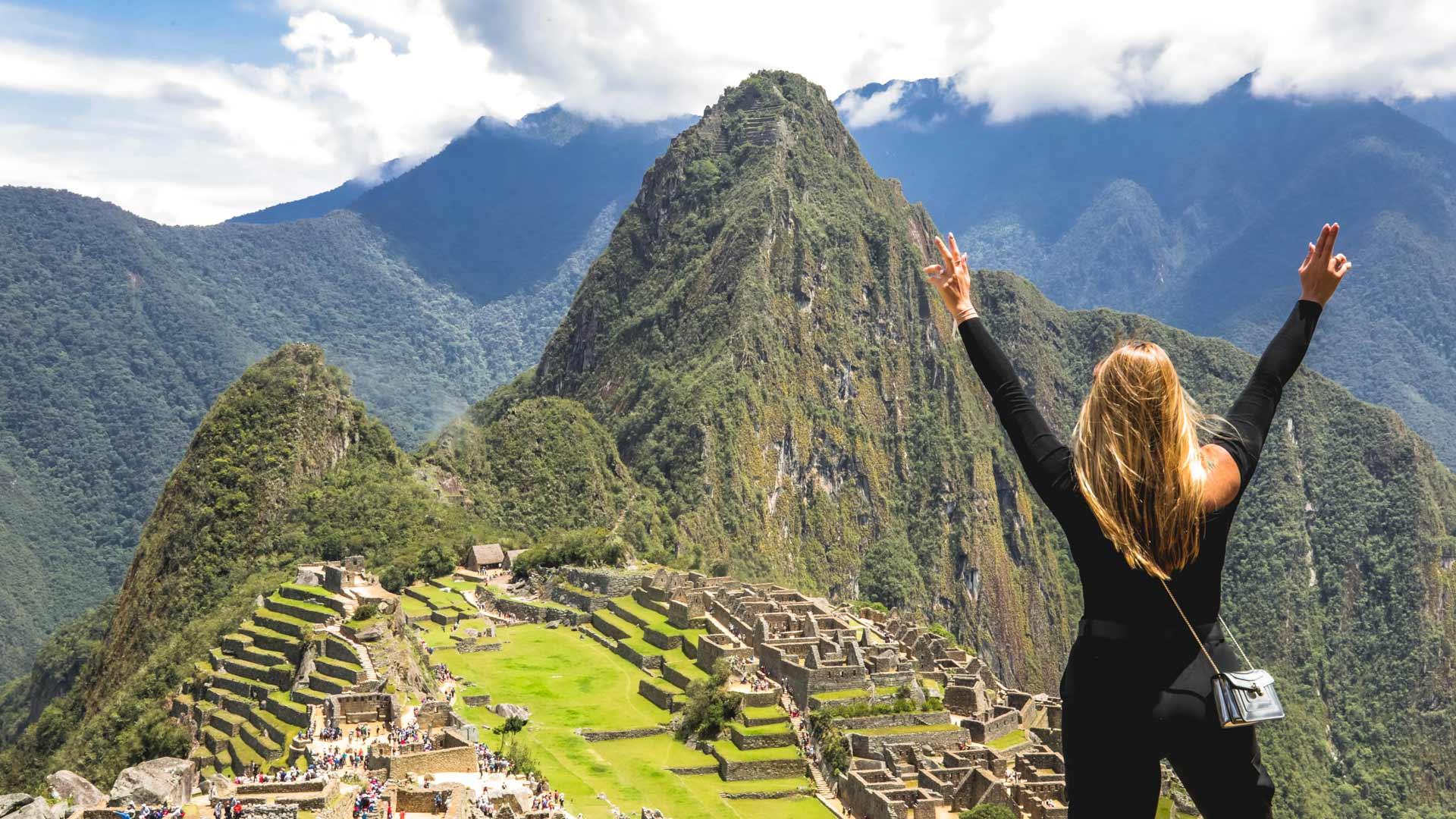
Machu Picchu, the lost city of the Incas, stands as a testament to human ingenuity, a breathtaking architectural marvel perched high in the Andes Mountains. Its mystical aura, stunning vistas, and rich history have captivated travelers for generations, making it a bucket-list destination for adventurers worldwide. Embarking on a journey to this UNESCO World Heritage site is an experience that transcends mere tourism; it’s a pilgrimage into the heart of an ancient civilization. This comprehensive guide will equip you with everything you need to know to plan your unforgettable trip to Machu Picchu.
A Glimpse into History: Unraveling the Mysteries of the Citadel
The exact purpose of Machu Picchu remains a subject of scholarly debate, adding to its enigmatic allure. Believed to have been built in the 15th century by the Inca emperor Pachacuti, it served as a royal estate, a religious sanctuary, or perhaps a strategic military outpost. Its remote location and sophisticated engineering, including intricate stone masonry that fits together without mortar, suggest a profound understanding of astronomy, agriculture, and architecture by the Incas.

Related Articles about The Citadel in the Clouds: Your Ultimate Guide to Traveling to Machu Picchu:
- Yogyakarta: A Journey into the Soul of Java
- Cape Town: A Symphony of Mountains, Sea, and Culture
- Qatar: Where Tradition Meets Tomorrow – A Comprehensive Travel Guide
- Ho Chi Minh City: A Journey Through Time, Culture, and Unforgettable Stays
- The Ever-Shifting Sands of Spectacle: Your Ultimate Guide to Las Vegas
The citadel was abandoned by the Incas around the time of the Spanish conquest and remained largely unknown to the outside world for centuries, hidden by dense cloud forest. It was famously "rediscovered" in 1911 by American historian and explorer Hiram Bingham, who was guided to the site by local farmers. Since then, Machu Picchu has undergone extensive restoration and archaeological study, revealing more of its secrets with each passing year.
Top Attractions Within Machu Picchu: Beyond the Iconic View
While the panoramic view of the citadel from the Sun Gate is undeniably iconic, Machu Picchu offers a wealth of fascinating attractions to explore within its walls:
- The Sun Gate (Inti Punku): This is the traditional entrance for hikers completing the Inca Trail. Reaching it offers your first breathtaking, unobstructed view of Machu Picchu. It’s a moderate hike, rewarding you with an unparalleled perspective.
- The Temple of the Sun: A beautifully constructed circular tower, this structure is believed to have been used for astronomical observations and ceremonies dedicated to the sun god, Inti. Its precision stonework is a marvel.
- The Intihuatana Stone: This enigmatic carved rock, meaning "hitching post of the sun," is thought to have been used by Inca astronomers to track the sun’s movements and predict solstices. It’s a significant spiritual and astronomical artifact.
- The Temple of the Three Windows: Featuring three large trapezoidal windows, this temple offers stunning views and is believed to represent the three realms of the Inca cosmology.
- The Principal Temple: A large, well-preserved structure with impressive stonework, this temple is thought to have been a significant religious site.
- The Sacred Plaza: A central open space surrounded by important structures, this plaza likely served as a gathering point for religious ceremonies and important events.
- The Terraces: The extensive agricultural terraces are a testament to the Incas’ ingenuity in adapting to the steep Andean terrain. They were crucial for cultivating crops like maize and potatoes.
- Huayna Picchu & Machu Picchu Mountain (Optional Hikes): For the adventurous, climbing Huayna Picchu (the iconic peak behind the citadel) or Machu Picchu Mountain offers even more spectacular views. Huayna Picchu is a steep and challenging climb with narrow paths, requiring pre-booked tickets. Machu Picchu Mountain is a longer, less technical hike with rewarding panoramic vistas.

Planning Your Journey: Essential Travel Tips
A well-planned trip to Machu Picchu is crucial for a smooth and enjoyable experience. Here are some essential travel tips:
- Book in Advance: Machu Picchu has daily visitor limits. Tickets, especially for Huayna Picchu or Machu Picchu Mountain, sell out months in advance. Book your entrance tickets and train tickets as soon as your travel dates are confirmed.
- Acclimatize to the Altitude: Machu Picchu is located at approximately 2,430 meters (7,970 feet) above sea level. Cusco, the gateway city, is even higher at around 3,400 meters (11,150 feet). Spend at least two days in Cusco or the Sacred Valley to acclimatize before heading to Machu Picchu to avoid altitude sickness. Drink plenty of water, avoid alcohol and heavy meals, and consider coca tea or medication if recommended by your doctor.
- Pack Appropriately: The weather in the Andes can be unpredictable. Pack layers of clothing, including a waterproof jacket, warm fleece, and comfortable hiking shoes. Bring sunscreen, a hat, sunglasses, insect repellent, and a reusable water bottle.
- Hire a Guide: While you can explore Machu Picchu independently, hiring a licensed guide will greatly enhance your understanding of the site’s history, architecture, and cultural significance. Guides can be hired at the entrance to Machu Picchu or booked in advance.
- Stay Hydrated: The high altitude and walking can be dehydrating. Carry plenty of water and refill your bottle at designated stations.
- Respect the Site: Machu Picchu is a sacred and fragile archaeological site. Stay on designated paths, do not touch or climb on the ruins, and do not litter.
- Consider Travel Insurance: It’s always wise to have travel insurance to cover any unforeseen circumstances, such as medical emergencies or trip cancellations.
- Learn Basic Spanish Phrases: While English is spoken in tourist areas, knowing a few basic Spanish phrases will be appreciated by locals.
Accommodation Options: From Budget to Luxury
Your accommodation choices will largely depend on your budget and preferred travel style.
In Aguas Calientes (Machu Picchu Pueblo): This is the town at the base of Machu Picchu and the closest place to stay overnight.
- Luxury: Inkaterra Machu Picchu Pueblo Hotel is a renowned eco-lodge offering a luxurious experience amidst lush gardens. Sumaq Machu Picchu Hotel provides elegant rooms and excellent service.
- Mid-Range: Numerous comfortable hotels offer good value, such as El MaPi by Inkaterra, Casa Andina Standard Machu Picchu, and Hotel Taypikala.
- Budget: Hostels and guesthouses are available for backpackers, offering basic but clean accommodations.
In Cusco: The historic capital of the Inca Empire, Cusco offers a wide range of accommodation options and is an essential stop for acclimatization.
- Luxury: Belmond Palacio Nazarenas and JW Marriott El Convento Cusco offer opulent stays in beautifully restored colonial buildings.
- Mid-Range: Many charming boutique hotels and well-regarded chains provide comfortable stays, such as Casa Andina Premium Cusco, Novotel Cusco, and Sonesta Hotel Cusco.
- Budget: Cusco has an abundance of hostels and budget-friendly guesthouses, especially in the San Blas neighborhood.
In the Sacred Valley: For a more relaxed experience away from the crowds, consider staying in towns like Ollantaytambo or Urubamba.
- Luxury: Tambo del Inka, a Luxury Collection Resort & Spa, Sacred Valley offers a serene escape.
- Mid-Range: Aranwa Sacred Valley Hotel & Wellness and Casa Andina Premium Valle Sagrado provide comfortable and well-appointed accommodations.
Transportation to Machu Picchu: Navigating Your Way
Reaching Machu Picchu involves a combination of travel methods:
1. To Cusco:
- By Air: The most common way to reach Cusco is by flying into Alejandro Velasco Astete International Airport (CUZ) from Lima (LIM) or other major Peruvian cities.
2. From Cusco to Aguas Calientes:
- Train (Most Popular): This is the most scenic and convenient option.
- PeruRail and Inca Rail are the two main train companies operating this route.
- Trains depart from Poroy Station (about 30 minutes from Cusco) or Ollantaytambo Station (in the Sacred Valley, about 1.5-2 hours from Cusco). Traveling to Ollantaytambo first allows you to explore the impressive Inca ruins there before catching the train.
- Ticket Classes: Both companies offer various classes, from the budget-friendly Expedition/Voyager to the more luxurious Hiram Bingham/First Class.
- Journey Time: The train journey from Ollantaytambo to Aguas Calientes takes approximately 1.5 to 2 hours.
- Inca Trail Trek (For the Adventurous): This is a multi-day hike that culminates in arriving at Machu Picchu via the Sun Gate. It requires booking well in advance and is a physically demanding but incredibly rewarding experience.
- Alternative Routes (Less Common): Some travelers opt for a combination of buses and short hikes, often referred to as the "Hydroelectric Route." This is a more budget-friendly but longer and less comfortable option.
3. From Aguas Calientes to Machu Picchu:
- Bus: The most common and direct way is to take a bus from Aguas Calientes to the entrance of Machu Picchu. Buses run frequently throughout the day, and the journey takes about 25-30 minutes up a winding road. Tickets can be purchased in Aguas Calientes.
- Walking: For the very fit and adventurous, a steep uphill hike of about 1.5-2 hours is possible from Aguas Calientes to the entrance.
Best Time to Visit Machu Picchu: Embracing the Seasons
The Andes have two distinct seasons, each offering a different experience:
- Dry Season (May to October): This is the most popular time to visit.
- Pros: Expect sunny days, clear skies, and less rainfall, making for excellent hiking and sightseeing conditions.
- Cons: This is also the peak tourist season, meaning larger crowds and higher prices. It can also get chilly in the mornings and evenings.
- Wet Season (November to April):
- Pros: Fewer crowds and lush green landscapes. Prices for accommodation and some tours might be lower.
- Cons: Significant rainfall is common, which can obscure views and make trails muddy and slippery. The Inca Trail is closed every February for maintenance.
Shoulder Seasons (April-May and September-October): These months often offer a good balance, with fewer crowds than the peak dry season and generally pleasant weather.
Recommendation: For the best overall experience, consider visiting during the shoulder months of April-May or September-October. You’ll likely encounter fewer crowds while still enjoying favorable weather.
Beyond Machu Picchu: Exploring the Surrounding Region
Your journey to Machu Picchu is an opportunity to explore the rich history and natural beauty of the Cusco region and the Sacred Valley:
- Cusco: Immerse yourself in the colonial charm of Cusco, explore its Inca ruins like Sacsayhuamán, visit the Coricancha (Temple of the Sun), and wander through the vibrant San Blas neighborhood.
- Sacred Valley: Discover the agricultural terraces of Pisac, the impressive Inca fortress and town of Ollantaytambo, the salt mines of Maras, and the circular agricultural terraces of Moray.
- Rainbow Mountain (Vinicunca): For a truly unique experience, embark on a day trip to see the stunning, multi-colored mountains. This is a high-altitude hike and requires good acclimatization.
- Humantay Lake: A breathtaking turquoise lake nestled beneath a glacier, accessible via a moderate hike from the Soraypampa area.
Conclusion: An Unforgettable Andean Adventure
Traveling to Machu Picchu is more than just a vacation; it’s an immersion into a world of ancient wonder. From the moment you set foot in the Andes to the awe-inspiring sight of the citadel itself, every step of the journey is an adventure. By meticulously planning your trip, understanding the history, and embracing the local culture, you are sure to create memories that will last a lifetime. So, pack your bags, open your mind, and prepare to be captivated by the magic of Machu Picchu – the citadel in the clouds.





